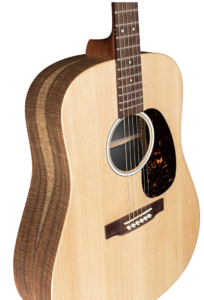 One of the key advantages of learning guitar is the focus on how to develop your musical ear and sensibility. You learn to recognize different chords, strumming patterns, and melodies, training your ear to identify musical elements.
One of the key advantages of learning guitar is the focus on how to develop your musical ear and sensibility. You learn to recognize different chords, strumming patterns, and melodies, training your ear to identify musical elements.
This skill enhances your ability to play by ear, improvise, and create your own music. As you progress, you will become more attuned to the nuances of music, allowing you to express yourself more effectively through your guitar playing.
Expanding Repertoire and Musical Styles
Guitar lessons also expose you to a variety of musical styles and genres, helping you broaden your repertoire. You will learn popular songs, classic tunes, and even explore different genres such as rock, blues, folk, or jazz.
This exposure allows you to develop a diverse musical vocabulary and adapt to different playing styles. As your repertoire expands, you’ll have a greater range of songs to play, and you’ll become more versatile as a guitarist.
Fostering Creativity and Self-Expression
Developing your musical ear not only teaches you how to play existing songs but also encourage you to explore your own creativity. You’ll learn how to write your own melodies, chord progressions, and even compose your own songs.
This aspect of guitar playing opens up endless possibilities for self-expression and allows you to share your unique musical voice with the world. As you experiment with different musical ideas, you’ll discover the joy of creating music that reflects your thoughts, emotions, and experiences.
Also read:
Unlock Your Musical Potential with Easy Guitar Lessons
How To Find Easy Guitar Lessons
Quick tips to play the classical guitar
How to Develop Your Musical Ear?
 Developing a musical ear is an important skill for any musician, as it allows you to recognize and reproduce musical elements such as melodies, chords, intervals, and rhythms by ear. Here are some strategies to help you develop your musical ear:
Developing a musical ear is an important skill for any musician, as it allows you to recognize and reproduce musical elements such as melodies, chords, intervals, and rhythms by ear. Here are some strategies to help you develop your musical ear:
- Active Listening: Engage in active listening by focusing on the music you’re hearing. Pay attention to melodies, chord progressions, rhythms, and the overall structure of the music. Try to identify and analyze the different musical elements as you listen.
- Singing and Vocalization: Singing is a powerful tool for developing your musical ear. Practice singing along to melodies, scales, and intervals. This helps you internalize the pitch and intervals and strengthens your ability to recognize and reproduce them.
- Interval Training: Work on recognizing and identifying intervals, which are the distances between two pitches. Start by learning to recognize simple intervals, such as the perfect fifth or major third. Use interval training exercises, apps, or online resources to practice identifying intervals.
- Transcribing Music: Transcribing involves listening to music and figuring out how to play it on your instrument. Start with simple melodies or chord progressions and try to play them by ear. Transcribing helps develop your listening skills, pitch recognition, and ability to reproduce what you hear.
8 Steps to Develop Your Musical Ear
 Developing your musical ear is a gradual process that requires practice and exposure to different musical elements. Here are some tips to help you develop your musical ear:
Developing your musical ear is a gradual process that requires practice and exposure to different musical elements. Here are some tips to help you develop your musical ear:
- Active Listening: Make a conscious effort to actively listen to music. Pay attention to the melodies, harmonies, rhythms, and nuances within the music. Focus on identifying different instruments and their roles in the overall sound.
- Singing and Vocalization: Practice singing along with songs and melodies. Singing helps you internalize pitch and intervals, improving your ability to recognize and reproduce musical sounds accurately.
- Interval Training: Work on recognizing and identifying intervals (the distance between two notes). Start by familiarizing yourself with common intervals, such as a perfect fourth, perfect fifth, major third, etc. Use interval recognition exercises or online ear training tools to practice identifying intervals by ear.
- Transcribing Music: Choose simple songs or melodies and try to transcribe them by ear. Start with slower tempos and simpler melodies, gradually increasing the difficulty. This exercise helps train your ears to recognize pitch and melodic patterns.
- Play by Ear: Attempt to play songs or melodies on your instrument by ear without relying on sheet music or tabs. Start with simple tunes and gradually progress to more complex pieces. This practice strengthens your ability to translate what you hear into musical notes and chords.
- Harmonic Analysis: Analyze the chords and harmonic progressions in songs you listen to. Try to identify the relationships between chords, chord qualities (major, minor, dominant), and the overall tonality of the music. This analysis will help you develop a deeper understanding of how chords function in different musical contexts.
- Jamming with Others: Engage in jam sessions or musical collaborations with other musicians. Improvising and playing music in real-time with others challenges your ears to adapt and respond to different musical cues, helping you develop a stronger sense of musical intuition.
- Ear Training Exercises: Practice specific ear training exercises that focus on areas such as pitch recognition, interval identification, chord recognition, and rhythmic dictation. There are many ear training apps, online resources, and courses available that offer structured exercises to improve your ear.
Playing Songs By Ear
 Playing songs by ear involves listening to a piece of music and then figuring out how to play it on your instrument without relying on sheet music or tabs. Here are 8 steps to help you play songs by ear:
Playing songs by ear involves listening to a piece of music and then figuring out how to play it on your instrument without relying on sheet music or tabs. Here are 8 steps to help you play songs by ear:
- Familiarize Yourself with the Song: Listen to the song multiple times to become familiar with its melody, chords, and overall structure. Pay attention to the different sections and any recurring patterns or motifs.
- Identify the Key: Determine the key of the song. This will give you a starting point for figuring out the chords and melodies. Listen for the tonal center or the note that sounds like “home” throughout the song.
- Identify the Chords: Listen closely to the song’s harmony and try to identify the chords being used. Start by focusing on the root notes of the chords and then try to determine their qualities (major, minor, dominant, etc.). Experiment with different chord voicings and inversions to find the ones that match the sound of the song.
- Figure out the Melody: Listen for the main melody of the song and try to pick it out by ear. Start by identifying the starting note and then work your way through the melody phrase by phrase. Use trial and error and your musical intuition to find the right notes. Singing along with the melody can also help you internalize it and find the correct pitches on your instrument.
- Determine the Rhythm: Pay attention to the rhythmic patterns and groove of the song. Listen for the accents, syncopations, and overall rhythmic feel. Clap or tap along with the beat to help internalize the rhythm.
- Practice and Refine: Once you have figured out the basic chords, melody, and rhythm, start playing along with the song on your instrument. Take it one section at a time and gradually piece everything together. Listen critically to your playing and make adjustments as needed to match the original recording.
- Use Trial and Error: Remember that playing by ear involves some trial and error. Don’t be discouraged if you make mistakes or need to try different notes or chords. The more you practice, the better you will become at recognizing patterns and finding the right notes.
- Trust Your Ears and Musical Intuition: Developing your musical ear and intuition is a crucial aspect of playing by ear. Trust your ears and rely on your musical instincts to guide you in finding the right notes, chords, and rhythms.
Using Solfege
Solfege is a system of using syllables to represent musical pitches. Practice solfege exercises, such as the “do-re-mi” scale, to improve your pitch recognition and ability to hear melodies in your mind. Sight-singing exercises also help train your ear to recognize and reproduce melodies accurately.
- Play by Ear: Challenge yourself to learn songs or melodies by ear without relying on sheet music or tabs. Start with simple tunes and gradually progress to more complex pieces. This exercises your listening skills, helps you understand the relationship between notes and chords, and improves your ability to play what you hear.
- Harmonic Analysis: Study and analyze the chord progressions in songs you listen to. Identify the chords being played and their relationships within the key. This helps you develop a sense of harmonic progression and improves your ability to anticipate and recognize chord changes.
- Jamming with Others: Play and jam with other musicians. This allows you to practice your listening skills in a live musical context, where you need to listen to what others are playing and respond accordingly. It also exposes you to different musical ideas and styles, enhancing your overall musical ear.
- Use Technology and Tools: Take advantage of technology and tools specifically designed to develop your musical ear. There are apps, software programs, and online resources that provide ear training exercises, interval recognition drills, and pitch identification exercises.
- Patience and Persistence: Developing a musical ear takes time and consistent effort. Be patient with yourself and embrace the journey. Practice regularly and integrate ear training exercises into your daily routine. Over time, you will notice significant improvements in your ability to hear and reproduce music.
Remember, developing a musical ear is a lifelong process. It requires ongoing practice, exposure to different musical styles, and an open mind. Stay dedicated, keep exploring new music, and continue challenging yourself to develop your listening skills. With time and persistence, you will gradually enhance your musical ear and become a more expressive and intuitive musician.
Jamming with Others
Jamming with others is an excellent way to improve your ear and overall musicianship. Here are some tips to maximize the benefits of jamming sessions for ear training:
- Active Listening: When jamming with others, focus on actively listening to what they are playing. Pay attention to the melodies, chords, rhythms, and dynamics. Train your ear to pick up the different musical elements and how they interact with each other.
- Play by Ear: Challenge yourself to play along with others without relying on sheet music or tabs. Use your ears to figure out the melodies, chord progressions, and rhythms. This forces you to listen closely and develop your ability to reproduce what you hear.
- Call and Response: Engage in call and response improvisation with other musicians. Take turns playing short musical phrases or motifs and then respond to each other’s ideas. This exercise helps develop your ability to listen and react in real-time, improving your musical ear and improvisational skills.
- Embrace Different Styles and Genres: Jamming with musicians who play different styles and genres exposes you to new musical ideas and challenges your ears. It helps you adapt to different harmonic progressions, rhythmic patterns, and tonalities. The more diverse your jamming experiences, the more you expand your musical vocabulary and ear.
- Focus on Harmony and Chord Progressions: Pay attention to the chord progressions being played during a jam session. Train your ear to identify the chords being used and their relationships within the key. This helps you develop a stronger sense of harmony and chord recognition.
Experimenting with Improvisation
Improvise solos and melodies during jam sessions. This encourages you to trust your ears and make musical choices on the spot. As you experiment with different melodic ideas, scales, and rhythms, your ear becomes more attuned to improvisational possibilities.
- Learn from Others: Observe and learn from the other musicians you are jamming with. Pay attention to their phrasing, dynamics, and use of musical elements. Listen to their ideas and try to incorporate them into your own playing. This helps you develop your musical vocabulary and expands your ear by exposing you to different approaches.
- Communicate and Collaborate: During jam sessions, communicate with the other musicians to establish musical connections. Discuss musical ideas, dynamics, and changes in the jamming direction. Collaborating and working together with others enhances your ability to listen, adapt, and respond to the musical conversation.
- Record and Reflect: Consider recording your jam sessions to review later. Listen back to the recordings and analyze your playing and interaction with others. Reflect on what worked well and areas where you can improve. This self-reflection helps train your ear and provides insights for future jam sessions.
- Have Fun and Stay Open-Minded: Enjoy the experience of jamming with others. Embrace the spontaneity and creativity that comes with collaborative music-making. Stay open-minded and receptive to new ideas and musical directions. A positive and relaxed mindset allows you to fully engage with the music and develop your ear more effectively.
Remember, the key to improving your ear through jamming is to actively listen, participate, and immerse yourself in the musical experience. Embrace the challenges and opportunities for growth that arise during jam sessions. With time and practice, your ear will become more attuned, and your musical communication skills will flourish.

